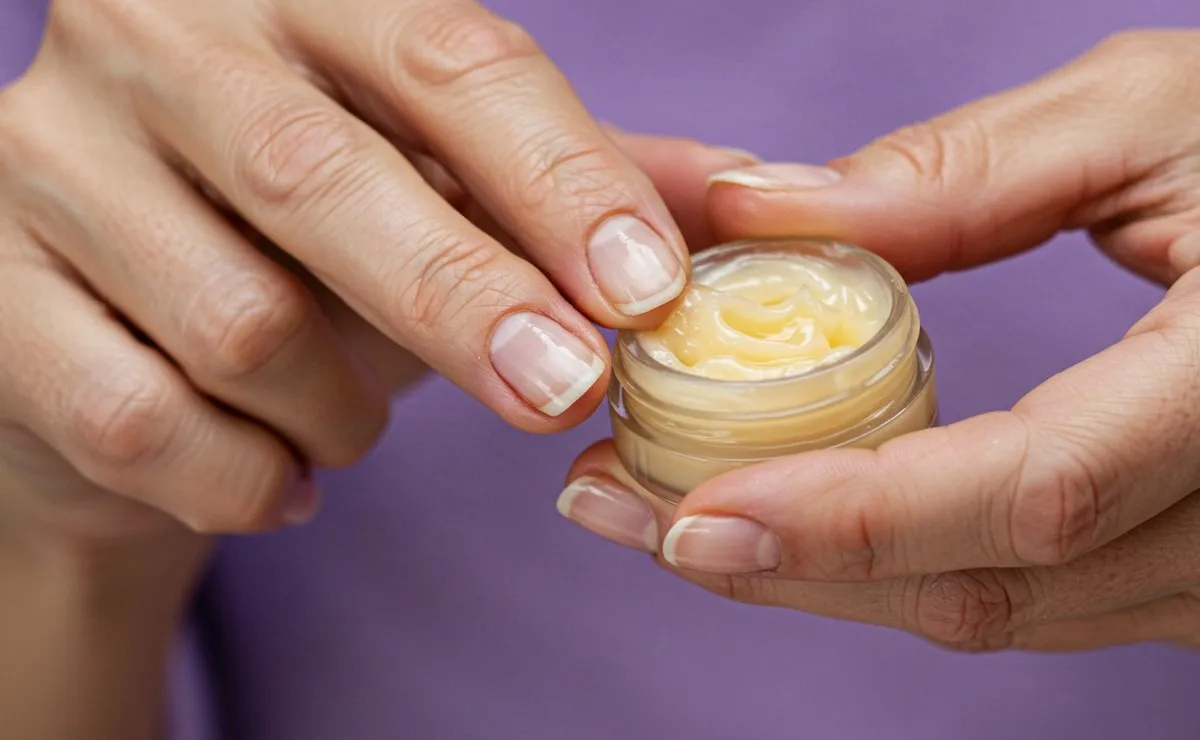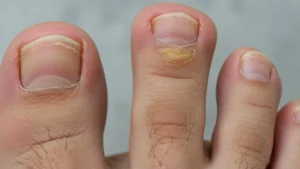Onychomycosis, commonly known as nail fungus, is a persistent fungal infection that affects both toenails and fingernails. It manifests itself through a change in the nail’s color (yellowish, whitish, or brown), thickening, brittleness, and sometimes an unpleasant odor. Although it is not usually serious, it can be unsightly, uncomfortable, and, if left untreated, can worsen or spread.
It is important to note that while home remedies can offer significant relief and act as adjuvants, they are not a substitute for professional medical consultation and treatment.
Especially in severe or recurring cases, or if you suffer from conditions like diabetes, it is essential to seek the advice of a dermatologist or podiatrist. Home treatments should be viewed as a complement to a specialist’s prescriptions.
One of the most popular and well-studied natural allies is tea tree essential oil (Melaleuca alternifolia). This potent plant extract is known for its antiseptic, antibacterial, and, crucially, antifungal properties. Its ability to penetrate the nail makes it an attractive option for combating fungus at its root.
For application, it is recommended to dilute a few drops of tea tree oil in a carrier oil, such as coconut or olive oil, to avoid irritation to the surrounding skin. Once diluted, it can be applied directly to the affected nail and surrounding skin with a cotton swab, twice a day. Consistency is key to seeing results, which can take weeks or even months to appear.
Another widely used home remedy is vinegar, whether white or apple cider vinegar. Its effectiveness lies in its acidic nature, which helps create a hostile environment for fungal growth. The acetic acid present in vinegar can inhibit the proliferation of these microorganisms, in addition to possessing mild antiseptic properties.
The most common way to use vinegar is through foot soaks. You can mix one part vinegar with two parts warm water in a basin and soak the affected toenails for 15 to 20 minutes, once or twice a day. It’s important to dry your feet thoroughly after soaking to avoid moisture, which promotes fungal growth.
Finally, garlic (Allium sativum), a staple ingredient in many kitchens, has also been shown to have antifungal properties thanks to a compound called allicin. Allicin is released when garlic is crushed or minced and is responsible for its potent antimicrobial action.
To use garlic topically, you can crush a few cloves of fresh garlic into a paste and apply it directly to the infected nail. You can cover it with gauze or a bandage for about 30 minutes and then rinse. This process can be repeated daily. Some people also choose to include more raw garlic in their diet for systemic benefits, although its direct effect on nail fungus is more limited this way.
In addition to these specific treatments, maintaining rigorous hygiene is essential. This includes washing and drying your feet daily, wearing moisture-wicking cotton socks, changing socks frequently, wearing breathable footwear, and avoiding walking barefoot in humid public places such as swimming pools or gym showers. Patience and persistence are crucial, as nail healing can be a slow process.























+ There are no comments
Add yours